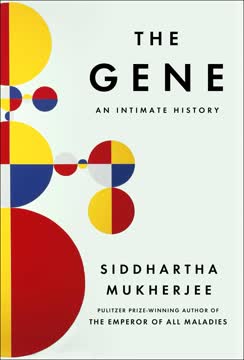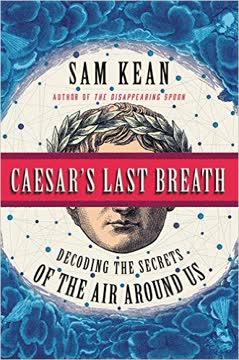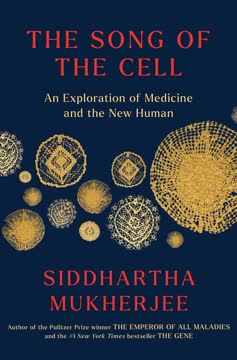نکات کلیدی
1. وراثت پیچیده و چندوجهی است و فراتر از وراثت ژنتیکی ساده میباشد
"وراثت، به عبارت دیگر، بیشتر از یک چیز است."
طبیعت چندوجهی وراثت. وراثت تنها شامل ژنهایی نیست که از والدین به ارث میرسد، بلکه شامل فرآیندهای پیچیدهای است که در بدن ما در حین تقسیم و تمایز سلولها رخ میدهد. این شامل موارد زیر است:
- وراثت عمودی: ژنهایی که از والدین به فرزندان منتقل میشوند
- وراثت افقی: انتقال ژنها بین موجودات غیرمرتبط (مانند باکتریها)
- وراثت اپیژنتیکی: تغییرات در بیان ژن بدون تغییر در توالی DNA
- وراثت سلولی: چگونگی انتقال ویژگیها توسط سلولها در حین تقسیم
مطالعه وراثت از مشاهدات ساده شباهتهای خانوادگی به درک پیچیدهتری از ژنتیک مولکولی تکامل یافته است و لایههای پیچیدگی در چگونگی انتقال و بیان ویژگیها را آشکار میسازد.
2. تاریخچه تحقیقات وراثت با پیشرفتهای علمی و اشتباهات اخلاقی همراه است
"ما به نتیجهگیری مضحکی میرسیم که اکثریت اجداد ما از نظر ذهنی عقبمانده بودند."
درک در حال تحول وراثت. تاریخچه تحقیقات وراثت سفری از پیشرفت علمی است که با چالشهای اخلاقی در هم تنیده شده است:
- نظریههای اولیه: از وراثت ترکیبی هیپوکرات به آزمایشهای نخود مندل
- جنبش نژادپرستی: سوءاستفاده از مفاهیم وراثت برای توجیه تبعیض و عقیمسازی
- کشف ساختار DNA: کارهای پیشگامانه واتسون، کریک و فرانکلین
- ژنتیک مدرن: توالییابی ژنوم و مطالعات ارتباطی سرتاسری ژنوم
ملاحظات اخلاقی:
- سوءاستفاده از مفاهیم وراثت برای توجیه نژادپرستی و تبعیض
- نگرانیهای حریم خصوصی در عصر ژنتیک شخصی
- پیامدهای اخلاقی فناوریهای ویرایش ژن مانند CRISPR
3. قد و هوش تحت تأثیر هر دو، ژنها و محیط به شیوههای پیچیدهای قرار دارند
"قد در اوایل قرن بیستم یک ویژگی به شدت وراثتی بود، زمانی که دانشمندان برای اولین بار شروع به اندازهگیری آن کردند. هوش نیز همینطور. امروزه، هر دو هنوز وراثتی باقی ماندهاند."
بحث طبیعت در برابر پرورش. هم قد و هم هوش ویژگیهای پیچیدهای هستند که تحت تأثیر عوامل متعددی قرار دارند:
قد:
- وراثتپذیری: تخمین زده شده در 80% در کشورهای توسعهیافته
- عوامل محیطی: تغذیه، مراقبتهای بهداشتی، وضعیت اقتصادی-اجتماعی
- روندهای تاریخی: اثر فلین (افزایش قد متوسط در طول زمان)
هوش:
- وراثتپذیری: تخمین زده شده در 50-80%، که با افزایش سن افزایش مییابد
- عوامل محیطی: آموزش، تحریک، وضعیت اقتصادی-اجتماعی
- چالشهای اندازهگیری: تعریف و کمیسازی هوش
تعاملات ژن-محیط نقش حیاتی در هر دو ویژگی ایفا میکنند و جداسازی کامل طبیعت از پرورش را غیرممکن میسازند. درک این تعاملات برای توسعه مداخلات و سیاستهای مؤثر ضروری است.
4. نژاد یک ساختار اجتماعی است که هیچ پایه زیستی معناداری ندارد
"صحبت از 'ژنهای هوش بالا' یا تلاش برای جداسازی برنامه ژنتیکی از محیطی که در آن بیان میشود، هم نادرست و هم گمراهکننده است."
رد زیستشناسی نژادی. تحقیقات علمی به طور مداوم نشان دادهاند که نژاد یک ساختار اجتماعی است نه یک واقعیت زیستی:
- تنوع ژنتیکی: تنوع ژنتیکی بیشتری درون گروههای نژادی نسبت به بین آنها وجود دارد
- تنوع پیوسته: ویژگیهای انسانی به تدریج در مناطق جغرافیایی متفاوت است، نه در دستههای مجزا
- زمینه تاریخی: دستهبندیهای نژادی در طول زمان تغییر کرده و بین فرهنگها متفاوت است
پیامدها:
- پزشکی مبتنی بر نژاد: کاربرد محدود و پتانسیل آسیب
- پرداختن به نابرابریهای بهداشتی: تمرکز بر عوامل اجتماعی مؤثر بر سلامت به جای تفاوتهای ژنتیکی
- مبارزه با نژادپرستی: استفاده از شواهد علمی برای به چالش کشیدن ایدئولوژیهای نژادپرستانه
5. DNA باستانی الگوهای پیچیده مهاجرت و اختلاط انسانی را فاش میکند
"هر کسی که پنج هزار سال پیش زنده بود و هر گونه نسل زندهای دارد، جد همه کسانی است که امروز زندهاند."
پیشتاریخ انسانی آشکار شد. تحلیل DNA باستانی درک ما از تاریخ بشر را متحول کرده است:
یافتههای کلیدی:
- چندین موج مهاجرت از آفریقا
- جفتگیری بین هومو ساپینس و دیگر هومینها (نئاندرتالها، دنیسووانها)
- اختلاط و جایگزینی پیچیده جمعیتها در اروپا و آسیا
پیامدها:
- به چالش کشیدن دیدگاههای سنتی درباره گروههای نژادی یا قومی متمایز
- فاش کردن نژاد مشترک بین جمعیتهای ظاهراً متفاوت
- ارائه بینشهایی درباره گسترش زبانها، فرهنگها و فناوریها
این تحقیق به همپیوندی جمعیتهای انسانی و طبیعت پویا میراث ژنتیکی ما تأکید میکند.
6. اپیژنتیک و تعاملات ژن-محیط دیدگاههای سادهانگارانه درباره وراثت را به چالش میکشند
"قدرت محیط محدود به کاهش نمرات آزمون هوش نیست، بلکه میتواند—در شرایط خاص—آنها را افزایش دهد."
فراتر از توالی DNA. اپیژنتیک و تعاملات ژن-محیط لایههای اضافی پیچیدگی وراثتی را فاش میکنند:
اپیژنتیک:
- تغییرات شیمیایی در DNA که بر بیان ژن تأثیر میگذارد بدون تغییر در توالی
- پتانسیل وراثتپذیری نشانههای اپیژنتیکی در نسلهای آینده
تعاملات ژن-محیط:
- همان ژنها میتوانند در محیطهای مختلف نتایج متفاوتی داشته باشند
- عوامل محیطی میتوانند بر بیان ژن در طول زندگی تأثیر بگذارند
مثالها:
- زمستان گرسنگی هلند: قرارگیری در معرض قحطی در دوران جنینی به نتایج بهداشتی در بزرگسالی مرتبط است
- استرس و تروما: تأثیرات بر بیان ژن و پتانسیل تأثیرات نسلزایی
این یافتهها به انعطافپذیری وراثت ژنتیکی ما و اهمیت عوامل محیطی در شکلدهی ویژگیها و نتایج بهداشتی تأکید میکنند.
7. درک وراثت پیامدهای عمیقی برای پزشکی، آموزش و جامعه دارد
"این تلاشها نیازی به اطلاعات ژنتیکی—یا حتی آزمون هوش—ندارند و احتمالاً تحت تأثیر مفهوم وراثتی هوش قرار خواهند گرفت."
کاربردهای عملی تحقیقات وراثت. درک در حال تحول ما از وراثت پیامدهای گستردهای دارد:
پزشکی:
- پزشکی شخصیسازی شده بر اساس پروفایلهای ژنتیکی
- درمانهای ژندرمانی و هدفمند برای اختلالات ژنتیکی
- آزمایش و مشاوره ژنتیکی پیش از زایمان
آموزش:
- شناسایی محدودیتهای تعیینگرایی ژنتیکی در پتانسیل تحصیلی
- توسعه مداخلاتی که به عوامل ژنتیکی و محیطی توجه میکنند
- پرداختن به نابرابریهای اقتصادی-اجتماعی که بر توسعه شناختی تأثیر میگذارند
جامعه:
- به چالش کشیدن کلیشههای نژادی و قومی بر اساس تصورات غلط ژنتیکی
- اطلاعرسانی سیاستها در زمینه بهداشت عمومی، حفاظت از محیط زیست و برابری اجتماعی
- ملاحظات اخلاقی در زمینه حریم خصوصی ژنتیکی، تبعیض و بهبود
در حالی که اطلاعات ژنتیکی میتواند بینشهای ارزشمندی ارائه دهد، مهم است که به تعامل پیچیده بین ژنها و محیط در شکلدهی ویژگیها و پتانسیل انسانی توجه کنیم. سیاستها و مداخلات مؤثر باید به هر دو عامل بیولوژیکی و اجتماعی پرداخته و به ترویج سلامت، آموزش و برابری کمک کنند.
آخرین بهروزرسانی::
FAQ
What's She Has Her Mother's Laugh about?
- Exploration of heredity: The book delves into the science of heredity, tracing its history from ancient beliefs to modern genetics. It examines how traits are passed down through generations and the implications of these processes on society.
- Intertwined stories: Carl Zimmer weaves personal narratives with scientific discoveries, illustrating the human impact of genetic research. The book includes stories of individuals affected by genetic conditions and the societal consequences of eugenics.
- Science and pseudoscience: Zimmer contrasts legitimate scientific advancements in genetics with the harmful pseudosciences that have misused heredity, such as eugenics and racial ideologies. This duality highlights the potential for both progress and peril in understanding heredity.
Why should I read She Has Her Mother's Laugh?
- Engaging storytelling: Zimmer is known for his ability to make complex scientific topics accessible and engaging. His narrative style combines personal anecdotes with scientific explanations, making the book both informative and enjoyable.
- Timely relevance: The book addresses contemporary issues surrounding genetics, such as genetic testing and the ethical implications of genetic engineering. Understanding these topics is increasingly important in today's society.
- Broad appeal: Whether you are a science enthusiast or someone interested in personal stories, the book offers something for everyone. It invites readers to reflect on their own family histories and the science behind them.
What are the key takeaways of She Has Her Mother's Laugh?
- Heredity is complex: The book emphasizes that heredity is not just about genes; it encompasses a wide range of biological and environmental factors. Zimmer encourages readers to rethink simplistic notions of inheritance.
- Impact of genetics on society: Zimmer discusses how genetic research has shaped societal views on race, intelligence, and disability. He warns against the misuse of genetic information for discriminatory practices.
- Personal connection to science: The author illustrates how genetics affects individual lives, making the science personal and relatable. This connection fosters a deeper understanding of the implications of heredity.
What are the best quotes from She Has Her Mother's Laugh and what do they mean?
- “The whole subject of inheritance is wonderful.” This quote reflects the awe and complexity of heredity, suggesting that understanding it can lead to profound insights about life and identity.
- “Heredity continues within us, as a single cell gives rise to a pedigree of trillions of cells.” This highlights the idea that heredity is not just about familial connections but also about the biological processes that shape our very being.
- “We should try to redefine the word heredity, to create a more generous definition that’s closer to nature than to our demands and fears.” Zimmer advocates for a broader understanding of heredity that includes environmental influences and the interconnectedness of life.
How does She Has Her Mother's Laugh address the history of genetics?
- Historical context: Zimmer traces the evolution of genetic science from early theories of inheritance to the modern understanding of DNA. He discusses key figures and milestones that shaped the field.
- Pseudoscience and eugenics: The book critically examines how genetics has been misused in the past, particularly through eugenics and racial theories. Zimmer highlights the dangers of applying genetic concepts without ethical considerations.
- Lessons learned: By reflecting on the history of genetics, Zimmer encourages readers to be cautious about how genetic information is used in society today. He emphasizes the importance of ethical responsibility in scientific research.
What role do personal stories play in She Has Her Mother's Laugh?
- Humanizing science: Zimmer uses personal narratives to illustrate the real-world implications of genetic research. These stories make the science relatable and emphasize its impact on individuals and families.
- Diverse perspectives: The book includes a variety of voices, from scientists to individuals affected by genetic conditions. This diversity enriches the narrative and provides a comprehensive view of heredity.
- Emotional resonance: Personal stories evoke empathy and understanding, allowing readers to connect emotionally with the scientific concepts discussed. This connection enhances the overall impact of the book.
How does She Has Her Mother's Laugh explain the concept of heredity?
- Definition of heredity: Zimmer defines heredity as the process by which traits are passed from parents to offspring, encompassing both genetic and environmental factors. He emphasizes that it is a complex interplay rather than a straightforward transmission.
- Mechanisms of inheritance: The book discusses various mechanisms of inheritance, including Mendelian genetics and modern understandings of DNA. Zimmer explains how these mechanisms influence traits and behaviors.
- Broader implications: Zimmer argues that heredity extends beyond genes to include cultural and environmental influences. He encourages readers to consider how these factors shape identity and society.
What are the dangers of misunderstanding heredity as discussed in She Has Her Mother's Laugh?
- Eugenics and discrimination: Zimmer warns that misinterpretations of heredity can lead to harmful ideologies, such as eugenics, which promote discrimination based on perceived genetic superiority. This has historically resulted in significant social injustices.
- Oversimplification of traits: The book cautions against oversimplifying complex traits, such as intelligence or behavior, as purely genetic. Such views can lead to fatalistic attitudes and neglect of environmental influences.
- Ethical concerns: Zimmer highlights the ethical dilemmas posed by genetic testing and manipulation. He urges readers to consider the moral implications of using genetic information in ways that could harm individuals or communities.
How does She Has Her Mother's Laugh relate to contemporary genetic issues?
- Genetic testing: The book discusses the rise of genetic testing and its implications for individuals and families. Zimmer explores how this technology can empower people but also raise ethical concerns.
- CRISPR and gene editing: Zimmer addresses the advancements in gene editing technologies, such as CRISPR, and their potential to reshape heredity. He emphasizes the need for careful consideration of the consequences of such powerful tools.
- Social implications: The author reflects on how contemporary genetic issues intersect with societal values, including race, disability, and identity. He encourages readers to engage critically with these topics as they evolve.
What scientific concepts are central to She Has Her Mother's Laugh?
- Mendelian genetics: The book explains Mendel’s principles of inheritance, including dominant and recessive traits. Zimmer illustrates how these concepts laid the groundwork for modern genetics.
- DNA and genes: Zimmer discusses the structure and function of DNA, emphasizing its role in heredity. He explains how genes encode traits and how mutations can lead to genetic disorders.
- Epigenetics: The book touches on the emerging field of epigenetics, which studies how environmental factors can influence gene expression. Zimmer highlights the complexity of heredity beyond simple genetic inheritance.
How does She Has Her Mother's Laugh encourage readers to rethink heredity?
- Complexity of inheritance: Zimmer challenges readers to move beyond simplistic views of heredity as solely genetic. He emphasizes the importance of considering environmental and cultural influences on traits.
- Interconnectedness of life: The book promotes a view of heredity that recognizes the interconnectedness of all living beings. Zimmer encourages readers to appreciate the shared history and biology that bind us together.
- Ethical responsibility: Zimmer calls for a more ethical approach to genetic research and its applications. He urges readers to consider the implications of their understanding of heredity on society and future generations.
نقد و بررسی
کتاب او خندهی مادرش را دارد یک بررسی جامع از وراثت، از مفاهیم باستانی تا علم ژنتیک مدرن است. زیمِر با ترکیب حکایات تاریخی و کشفیات علمی، موضوعاتی مانند بهنژادی، اپیژنتیک و کریسپر را پوشش میدهد. خوانندگان از دسترسیپذیری کتاب، داستانسرایی جذاب و تحقیقات دقیق آن تمجید میکنند. در حالی که برخی آن را بیش از حد طولانی یافتند، بیشتر خوانندگان از عمق و گستردگی آن قدردانی کردند. این کتاب به چالش کشیدن تصورات سادهانگارانه از وراثت میپردازد و تعامل پیچیدهی ژنها، محیط و فرهنگ در شکلگیری هویت ما را آشکار میسازد.
Similar Books
















